So you want to tour. You ski like Hoji. Or MikeD. Or Candide. You want a ski touring binding that can handle your radness. But you're also a purist so you're going to be walking uphill. For hours and hours on end. For the 2018-19 season there are two choices which make sense. The choice is between Fritschi's Tecton (review here) or the Salomon/Atomic Shift (review here part 1 and part 2).
Tecton vs SHIFT
I don't mention platform bindings. Why? Because they suck. They have platforms so they alter ski flex. They're heavy. Touring with them means you are walking up with the equivalent of a gigantic dildo attached to your feet galumphing up the slopes. Go ahead and tell me how you slay your rad 2,000 foot KeyVailAspenHoe bro-tastic lines with your Daymakers, Wardens, Dukes, Guardians. See if I care. The platform binding is dead. You just don't know it yet.
I also don't mention CAST. It's a good system. It's well thought-out. But CAST users love it and know the compromises (complexity, carrying the stuff around in the pack etc) and accept it. CAST doesn't need believers; they already have that.
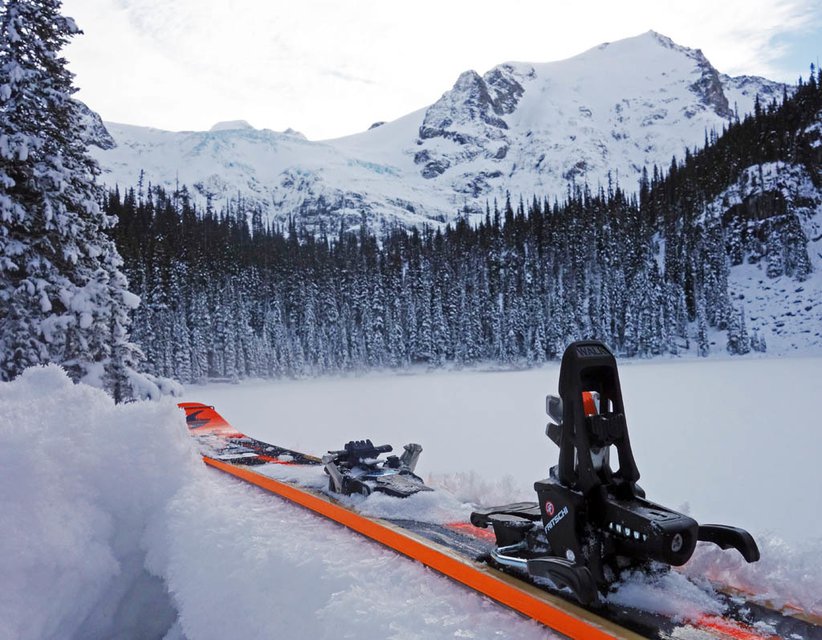
Tecton
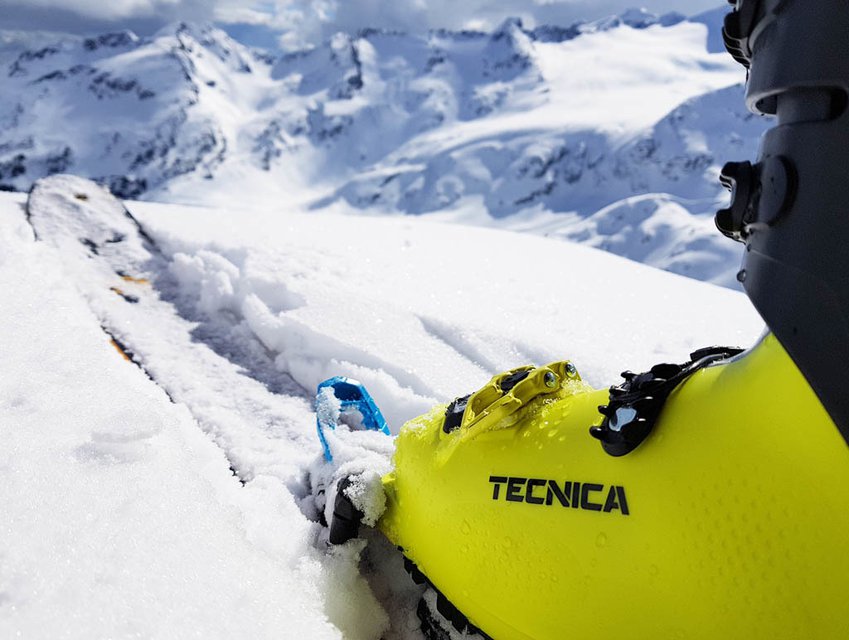
Shift
I also don't mention Marker's Kingpin which is in a bit of an odd spot. Compared to Tecton, Kingpins weigh more, but do not have the safety story of Tecton's frontal elasticity and release. While not made of plastic like Tecton they have had reliability issues and already had one recall based on toepiece pin issues. Marker's lack of willingness to listen to consumer's pointing out that Kingpin toe pins were falling out also reflects poorly on the company. Marker bindings already do not have the best reputation; their behaviour of late does nothing to help that. As compared to Shift, Marker's Kingpin weighs less and is perhaps less complicated. However they also do not have the massive frontal elasticity of Shifts and cannot handle alpine boots and they're more expensive than SHIFT.

If you're going to be touring more than skiing hardpack then go with Tecton. If you're going to be doing more hardpack or if you're a big person then get Shift. Want one setup for travelling? If the forecast is for pow and you'll be doing a bunch of climbing and transitions then go for Tectons. If your forecast is for variable and your skiing is more of the straight up then one big lap down variety then go for Shifts.
Bottom line is that every person's needs and wants are, by definition, subjectively individual. Think of the Tecton as a touring binding that skis well. Think of Shift as an alpine binding that tours well.
- Touring: Tecton is significantly lighter then Shift (180g per foot is a lot). Tecton allows for tour to ski mode changes without having to remove the ski. Tecton also allows one to change to walk mode on the fly. There's two elevators. There's less elasticity at toe (but still impressive amounts) and heel.
- Downhill performance: Shift has more elasticity at toe and heel. Shift has slightly higher DIN (13 vs Tecton's 12). Shift has an alpine toe while both bindings have alpine-style heels.
- Durability: Tecton has more plastic but has been out in production for a whole season without any defects that would strand the user in the field. This is the Shift's first production year. For alpine touring gear the first production year is almost almost always a beta year so expect surprises. Generally speaking, midway through this 2018-19 season neither binding has had massive issues (but see the end of this article for possible improvements.)
Changes to Shift or Tecton for 2018-9
Neither Salomon nor Atomic made changes from the pre-production Shift bindings reviewed.
New for Tecton and for Evo for the 2018-9 season is a re-designed and re-shaped toe “bumper”. This bumper is wider, and slides on channels. This should aid in mitigating a problem discussed more in my Tecton review from last year wherein if you fell forward while in tour mode there was a chance that your boot would be dented. The re-designed Tecton/Vipec toe should mean that if you fall forward then force is distributed lessening the possiblity of boot damage.
The Tecton/Evo heelpiece remains unchanged. However I made the discovery that Fritschi Freeride brakes from some model years will work fine with Vipec and EVO. This represents some consumer cost savings because there are boxes and boxes of those older Freeride brakes around in storage rooms
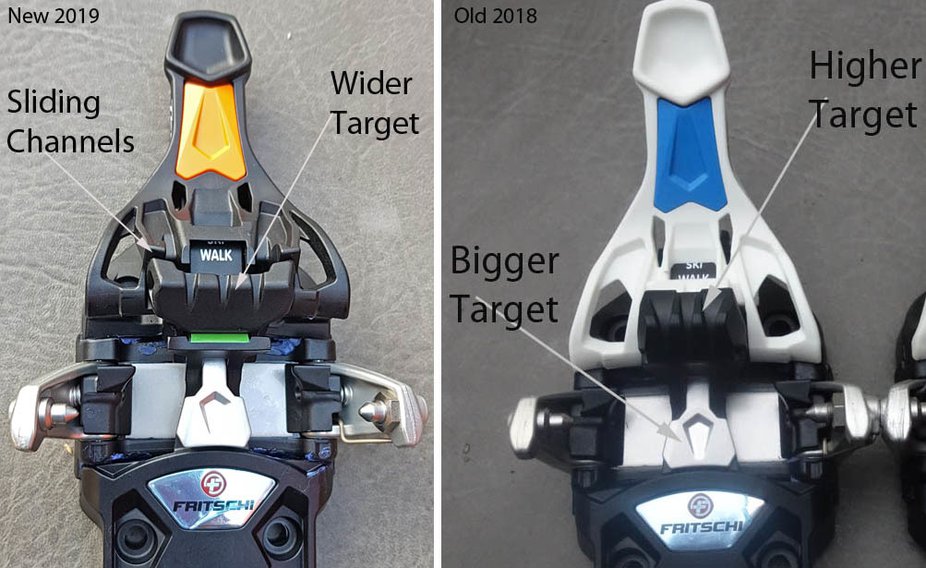
Fritschi Tecton/Evo toepiece - redesigned for 2019 to help prevent boot damages in forward "knee-falls"
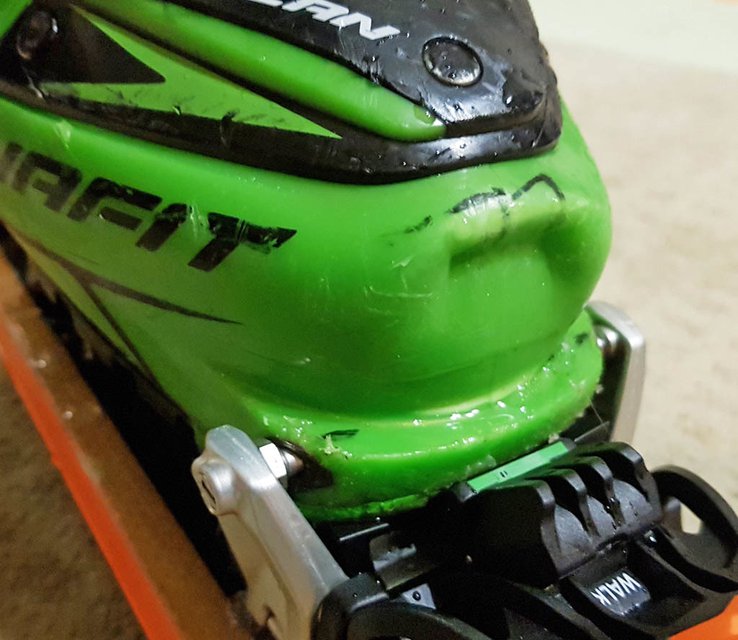
Old toepiece target designed could (and did) punch the toe of your boot if you fell forward while the toe was locked out for tour mode
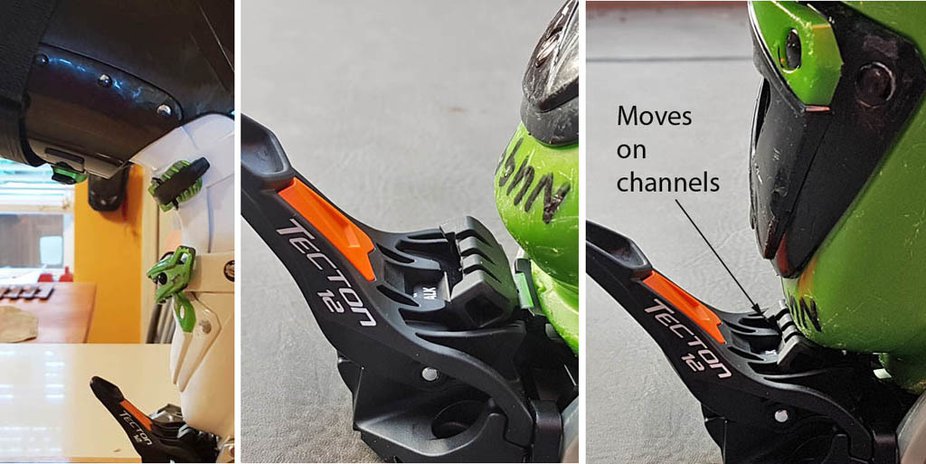
On left - the old toe design when the boot was in tour mode. On right the new toe design (i) distributes force over the wider toe target; and (ii) distributes force via the toe target moving on channels. Theoretically this should help prevent boot toe-punches in a forward fall onto your knees while in tour mode
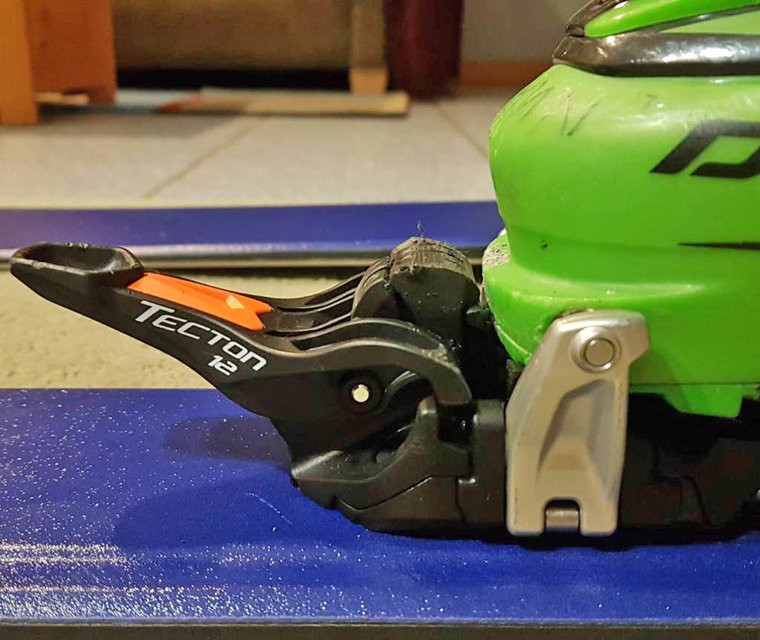
Home garage fix is to file the old toepiece target down a bit. I basically just removed the protruding column and created a smooth round shape. File down enough that in a forward fall your boot will still trigger release but conversely your boot has a bit more room to fall forward.
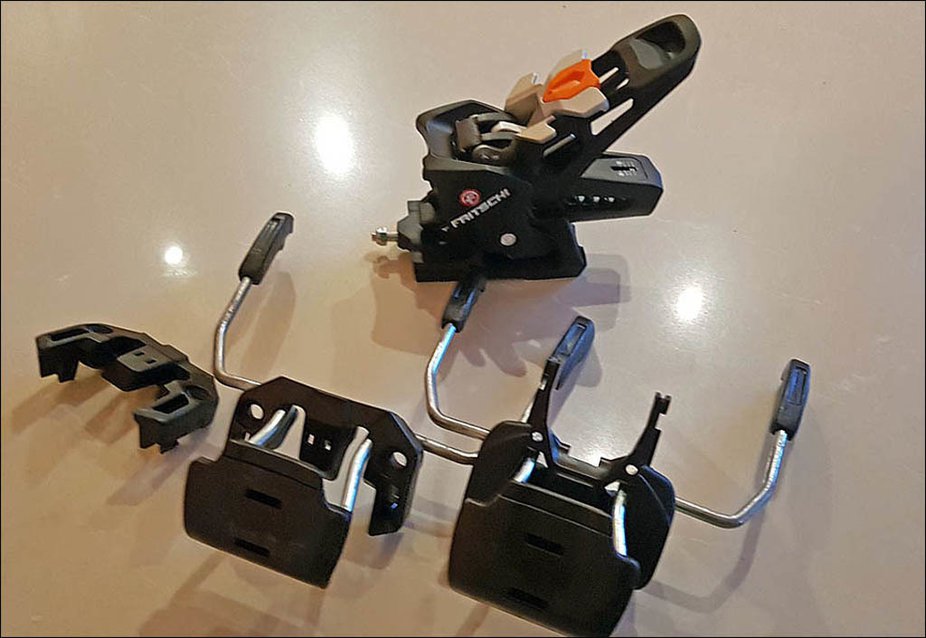
On left the FR brake with the mounting bracket. Just snap it out of the plastic retainer clip bracket and stick it in the Vipec/Tecton holder.Old heelpiece. Note that you can use Fritschi Freeride Diarmir brakes in either the new or old Tecton/Evo heelpiece.
TECTON AND SHIFTS NITS TO PICK
These are fast-moving times for skitouring equipment. There's now worthy one boot to do it all (my picks the Tecnica ZeroG Tour Pro and the Atomic Hawx Ultra XTD). There's now also bindings that can potentially do it all. With this newness there have been lots of people adopting Tecton and Shift as their do-it-all binding. Perhaps surprising many manufacuturers users are choosing to mount and work on their own bindings rather than letting shops do the work. Users are also using gear in ways perhaps unintended. With the expansion of the user base comes the discovery of gear issues.
Here's a rundown of some of the more commonly found Tecton and Shift issues collected in one handy-dandy convenient spot. Along with that are proposed solutions.
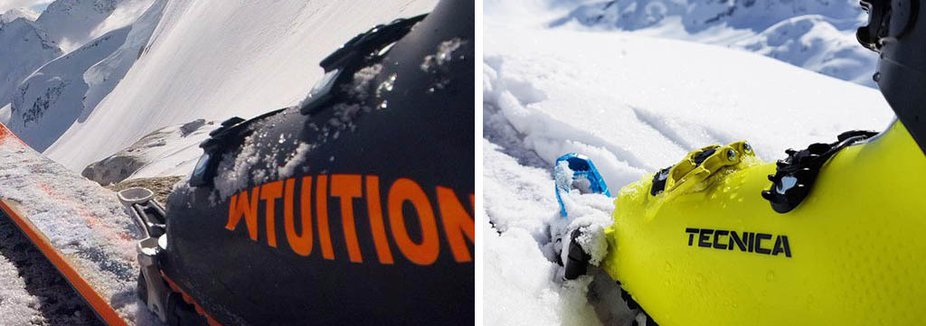
Gratuitious Hawx XTD and ZeroG Tour Pro shot
TECTON ISSUES
Brake pads break
Fritschi had a video saying you can hit the Tecton/Evo tour mode lever then stomp down to engage brakes. That video is WRONG. Fritschi's advice to grease with white lithium grease or use some sort of silicone spray is also WRONG. It'll work for a bit then snow will get in and strip all the lube away. All you'll do is break the brake pads - see pictures below. What you must do is to use your hand to press the brakes onto the brake pad. And only then do you engage the tour lever thus minimizing stress on the plastic brake pad holder.
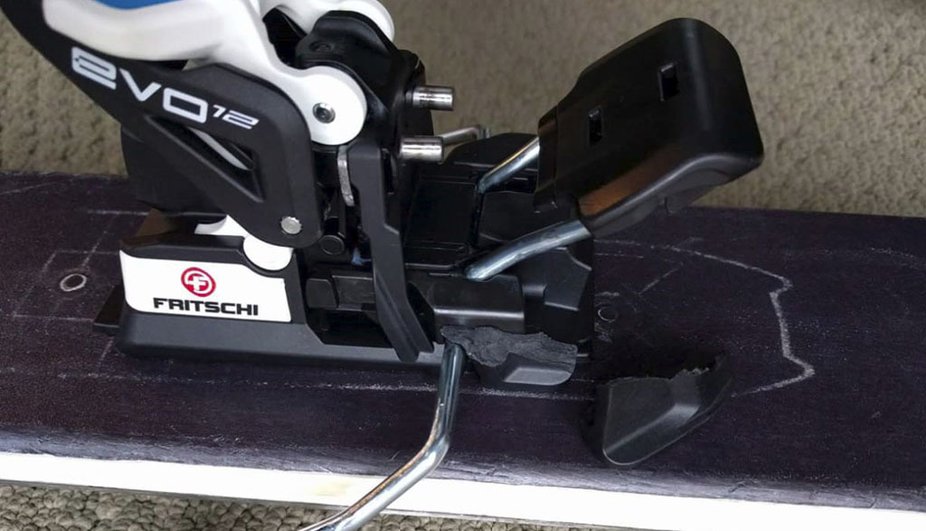
If you gorilla stomp the brakes down then voila - broken brake pad
Brake pad requires trimming
The Tecton/EVO brake pad holder's tolerances are tight so much so that brakes may not deploy as they get hung up on excess material. Simply use a file to remove some excess material. It's a lot easier to do so when you take the rear heelpiece apart.
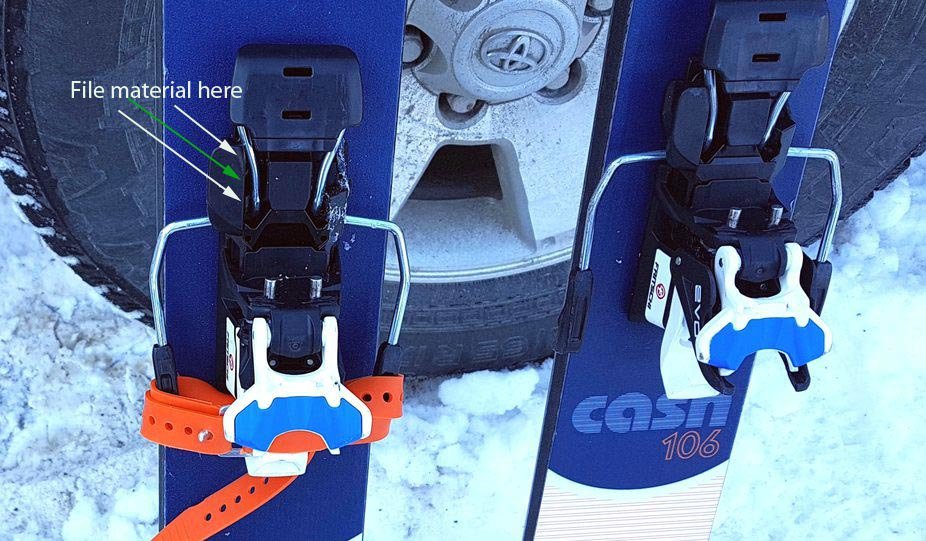
Two broken brake pads and a Voile strap fixes all
SHIFT ISSUES (and set-up mistakes)
Many people are mounting (unverified mounting template here - use at own risk ). Some know what they're doing. Many don't. It may well be that Shift is attracing users who've never used a tech binding before and aren't overly familiar with the concept. Nevertheless the sheer number of new Shift users has resulted in a multitude of issues rearing their head.
AFD won't adjust upwards
The Shift's AFD adjustment screw usually is shipped in-box in the lowest setting. You'll turn it to adjust the AFD upward. If you find it hard to do so you might be wedged under the black toe block and not up and flush against the wings. What you may have to do is then insert a boot into the toe. Then use a flathead screwdriver (or whatever you have handy) to raise the boot toe and only then turn the AFD adjustment screw to raise the AFD to the desired position.
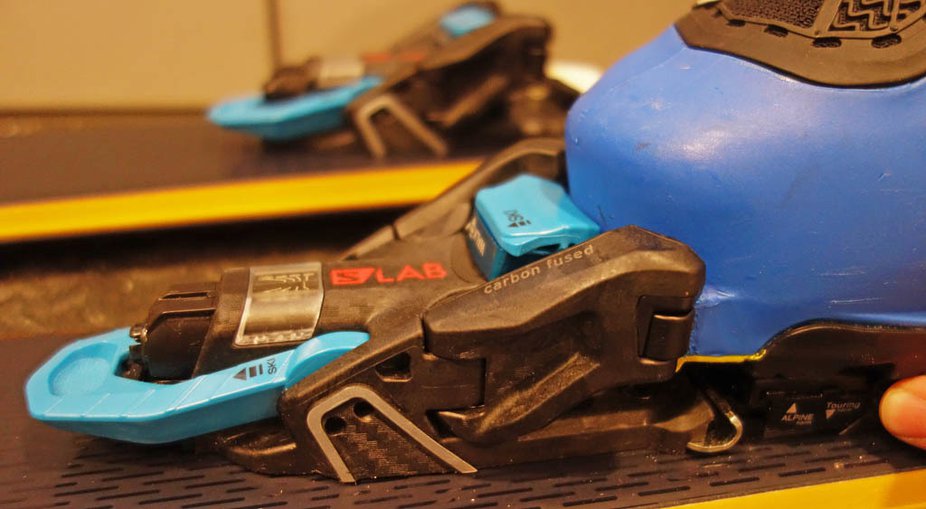
AFD migrates
Adjusting the AFD to the desired position and having it stay there seems to be a major issue for many people and the reason for many pre-releases. The reason for this is not user mechanical ineptitude but the fact that the AFD screw is not an infinite adjustment but instead, a stepped adjuster where dialling the AFD adjustment screw moves the AFD up and down in increments.
MnO has some useful hints on how you can adjust the AFD to have it stay in place
1. Understand that you are not dealing with a stepless smooth setting action, but a step-by-step slider that climbs or goes down one step at the time2. Crank the AFD up to one position above what you need
3. Adjust the AFD down slowly, while putting a bit of pressure on the toe. The AFD will then suddenly click down to the position you need
4. Tighten the screw about 1/4 of a turn. Not enough to lift it up a click, but to tighten it so that the edge really sits safely on the right level.
Note also that some users (I am one of them) aren't adjusting the Shift AFD to shop manual specs but overtightening approximately a 1/4 turn so the AFD barely touches the boot sole to help avoid pre-releases and the AFD migration issue. This isn't a Salomon/Atomic recommendation so do what you have to do.
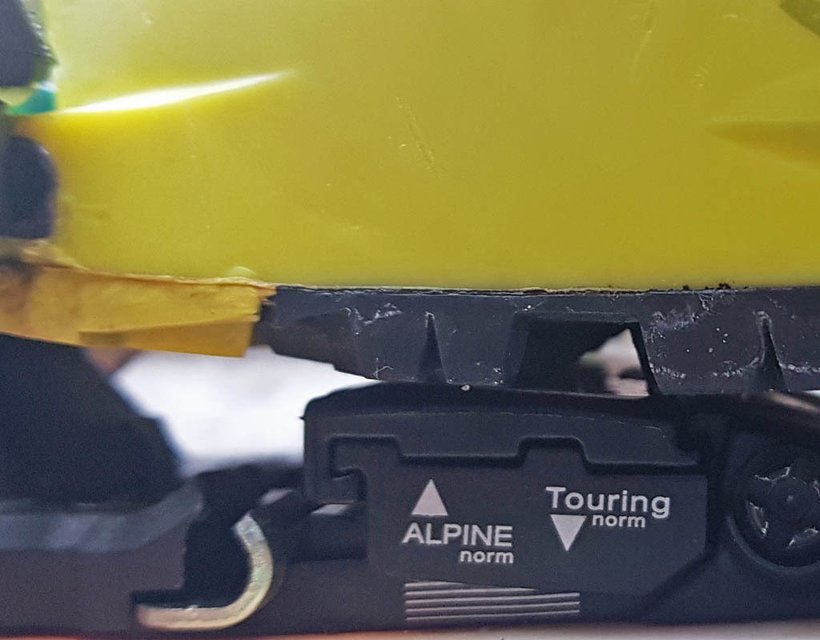
There should be the tiniest of gaps between AFD and the bootsole. I'm living dangerously and have the AFD barely touching the bootsole
Forward pressure is very finicky
Setting up Shift forward pressure to correct spec is crucial. If you have snow on your toe and step in you'll likely pre-release. Have your set-up off by less than a cm and you'll likely pre-release. The shop manual could be a bit more clear in this regard as it shows that the silver piece should be flush with the back of the Shift heel-piece housing (picture below).
Instead look closely at the housing where there are two arrows. According to the shop manual line up the raised rectangle on the silver piece with the arrows of the housing.
This is probably 1-2mm difference than being flush with the housing.
Some shops that prefer to be anonymous are even recommending lining up the edge of the silver piece with the arrows on the housing. This is slightly tighter than the flush with the back edge of the housing; perhaps 2-3mm more pressure.

From pg 25 of the Salomon shop manual
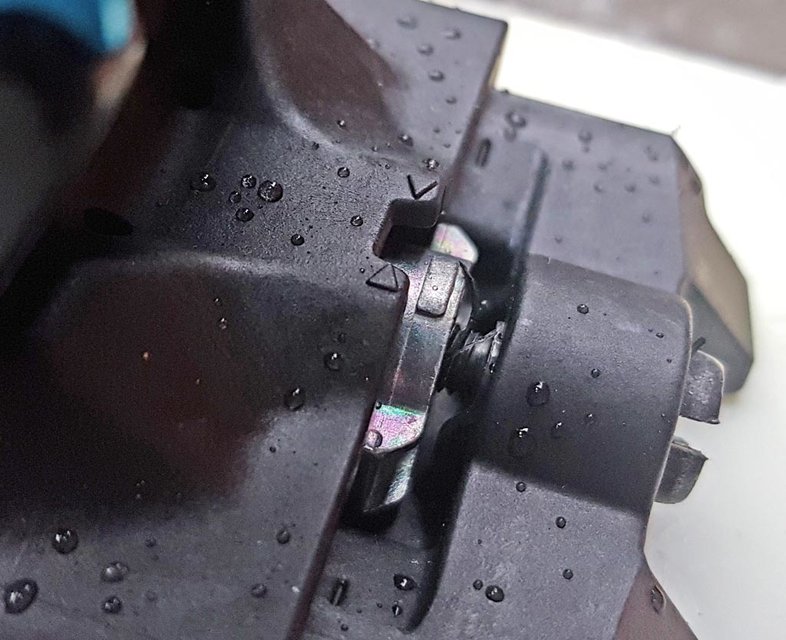
Back of the Shift heel housing before the boot is inserted - note the two arrows. Also note the raised rectangle
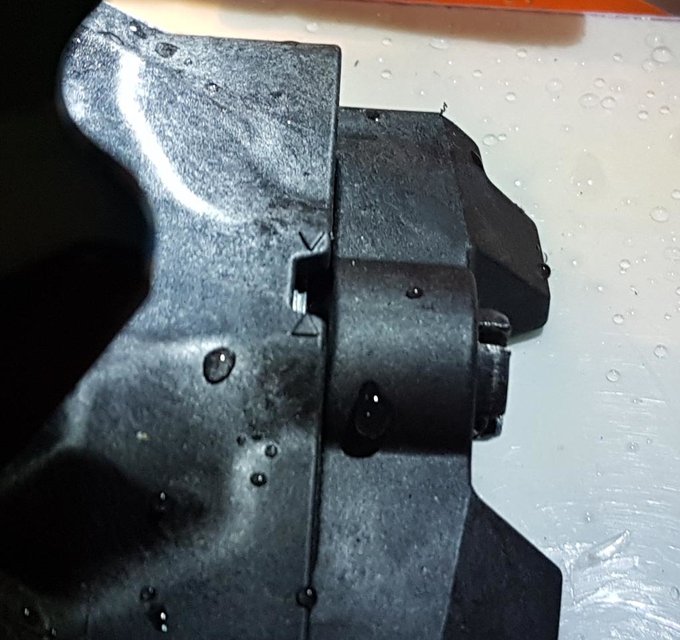
Shift adjusted with the silver piece lined up with the two arrows ever so slightly tighter than if the silver piece was flush with the housing
Toe lever is stiff
In tour mode you have to lock out the Shift toe so the binding stays in your tech boot's pin-holes. The toe lock is initially really stiff. Don't be afraid to get aggressive as there's one lock detent then another further lock detent . The mechanism works in over time so it's less stiff.
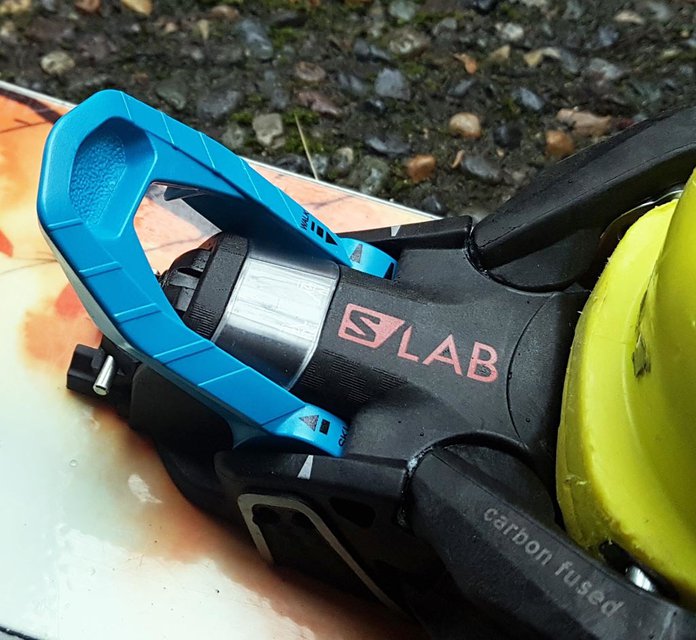
First toe lever lock. It'll stay in but not if you're aggressively kicking steps or kick-turning
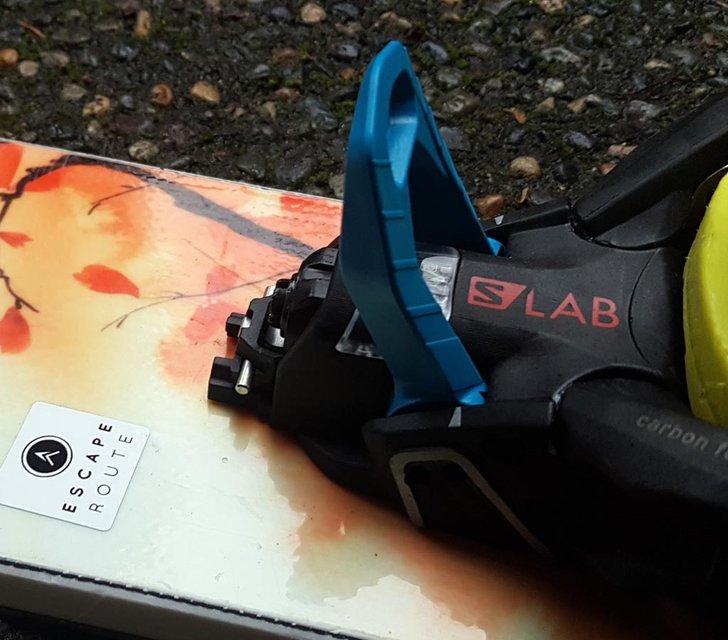
The toe lever has to be completely vertical to be fully locked out.
Brakes have two settings
Shift brakes pop into place on a cammed mechanism once the walk mode lever is slipped over. There is also a latch so if you only set the first stage by engaging the cam then the brakes can pop from stowed-away tour mode and deploy into ski mode.
First of all; clear the snow off the brake mech by whacking it with your ski pole or your hand. Then flip the walk mode lever, raise brakes into tour mode and then grab and lift the brakes with your fingers while pushing the lever down hard with your thumbs until you hear a louder click. Then you'll know the brakes are locked into tour mode. Or you can give the ski some good hard stomps once you're in tour mode to set the latch.
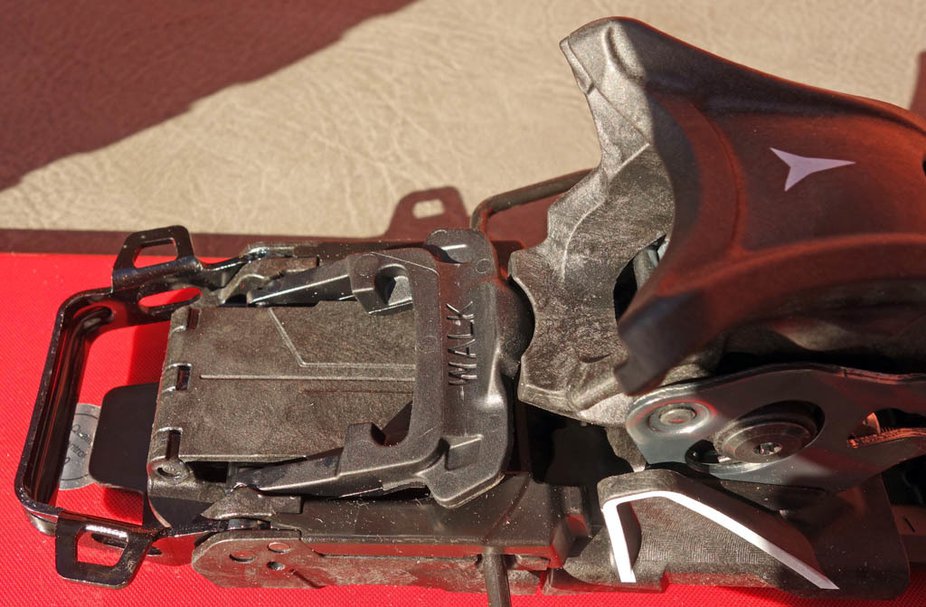
The Shift brake and walk/tour mechanism. Like anything with crevices, it can and will get gummed with snow and ice
Pre-release
This isn't so much a Shift issue. It's a user (un)realistic expectation issue. It seems to come from users who feel - "I can ski all these things in my Look Pivot yet I blow out of my Shifts". Newsflash - the Shift skis like a STH. This means that the Shift will ski as well as an above-average performing binding.
When Salomon/Atomic's marketing puffery says that Shift has "retention like an alpine bindning" it means just that. There's a wide spectrum of performance within the "alpine binding" with good and bad options. On the high end you have Pivots that have massive bags of elasticity while on the other you have the older Markers which pre-release as soon as you looked at them
So if you believe that the Shift should have the elasticity and retention of the very best or highest end alpine binding and you want to ski it very aggressively then you may be disappointed. What they are is acceptable for many skiers in terms of retention but in the end, they are still a better than average binding in terms of retention. Coming back to what is the best binding for the type of skier who is large and/or very aggressive, look for systems like CAST or just accept that touring bindings may not be for you.

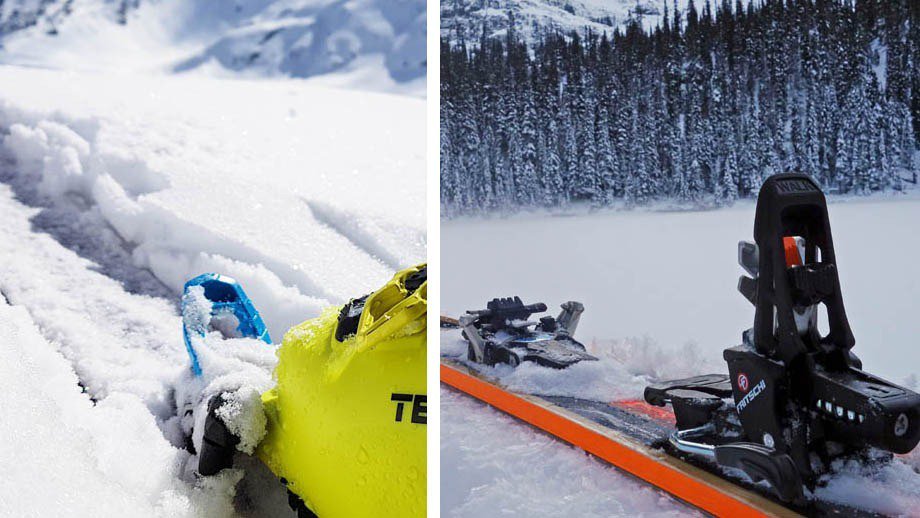
Comments